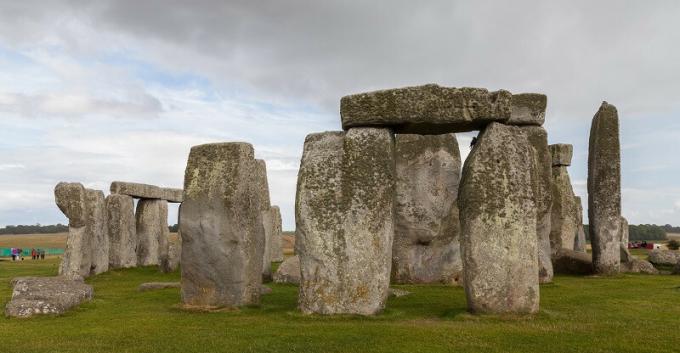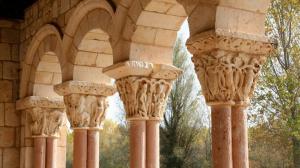Stonehenge: what is it and what was the function of this prehistoric monument?
In the Middle Ages, it was said to have been built by the wizard Merlin. Later, in the 17th century, it was commented that it was impossible for the Britons to have built such a monument, since they were an "uncivilized and barbarous" people. And when, finally, it was accepted that Stonehenge was a work prior to the Roman conquest, the questions returned: what was it built for? Was it a place of worship? Did the druids build it? Was it an astronomical observatory? How were the stones transported to the place?
Although many of these questions have been clarified by archaeology, Stonehenge still holds many secrets. Let's see what is the trajectory of this impressive megalith, one of the most important of the European Neolithic.
- Related article: "The 6 stages of Prehistory"
Stonehenge: symbol of the Neolithic in Europe
If there is a monument that characterizes the European Neolithic period, it is Stonehenge. Situated in the south of England, this huge prehistoric complex is one of the best examples of megalithic construction
, which characterized the culture of not only the European continent, but also North Africa."Neolithic" is a term coined in 1865 by John Lubbock. It is made up of the Greek words neos (new) and lithos (stone), and arose to differentiate it from the immediately preceding stage, the Paleolithic (of palaios, ancient, and lithos, stone).
Why was this differentiation considered necessary? Because In the Neolithic era, a series of innovations took place that profoundly marked human culture and society.. On the one hand, stone tools were significantly improved, and on the other (and this is the most important) the birth of agriculture and livestock farming took place. That is, human groups went from a subsistence economy (based on hunting and collection) to a sedentary lifestyle and the production of surpluses that, ultimately, gave rise to the trade.

Human settlement in villages implied, according to many historians, a greater feeling of belonging to the land. This feeling favored the proliferation of constructions and, of course, burials. In the case of Europe and North Africa, around the III millennium BC. c. the phenomenon known as megalithism appeared, derived from the Greek words megas (big) and lithos (stone). That is, the culture of the "big stones", which was characterized by constructions made with huge monoliths. Stonehenge represents one of the greatest exponents of this constructive trend.
- You may be interested in: "The 8 branches of the Humanities (and what each of them studies)"
megalithic culture
Thus, if something characterizes the European Neolithic, it is megalithism or megalithic culture. These constructions were based on the menhir, a colossal stone that was stuck into the ground in a vertical position. From here, the structures could be varied. Let's see below which were the most characteristic.
1. He henge
He henge It is the simplest construction that we can find within the megalithic culture. In fact, strictly speaking, it is not a construction, but a circular moat and embankment. As we will see later, in its first phase Stonehenge was a henge.
2. the cromlech
The characteristic ring of stones is what we call “cromlech”. This ring may or may not have a pit; We find some examples, such as Stonehenge itself, in which the ring of stones and the ditch and the embankment are combined. Another example of a cromlech, also located in England, is Castlerigg.
3. the burial mounds
It is a funerary construction that can be elongated or circular. The Newgrange monument in Ireland is an excellent example of a burial mound.
4. the dolmens
Finally, we find the dolmens which, like the burial mounds, are collective tombs. The dolmen is perhaps the best-known Neolithic funerary construction; consists of two or more vertical stones and a horizontal one that serves to cover the space. Some of the best known are the Carrowmore dolmen in Ireland, the Rollright Stones in England and the Antequera dolmens in Spain.
The megalithic culture spread through Western Europe, the Mediterranean area and North Africa. The funerary uses of these monuments are clear, but there are other functions that are still unknown to us today. Among the great mysteries of European Neolithic culture is, of course, Stonehenge.
- You may be interested in: "Archaeology: what is it and what does this discipline study"
a huge complex
Stonehenge is a large Neolithic complex covering a considerable area. Because what we all have in mind when we think of this monument (namely, the cromlech or ring of stones) is only a small part of this imposing construction. In addition to the cromlech itself, we find other elements, such as the great avenue, the town (Durrington Walls) and the circles of West Amesbury and Woodhenge.
British archaeologist Michael Parker Pearson he proposed that this series of sites would configure a ceremonial route, which would start at the stone circle (the cromlech), continue along the avenue to the town of Durrington Walls and, finally, end at Woodhenge. This ritual tour would take place, according to Parker, at sunrise on the day of the summer solstice and would end at sunset on the same day.
The cromlech is quite isolated from the rest of the sites in the complex. It is connected to them through the Avon River and the great avenue, which curiously ends at the river, where the henge stands. of West Amesbury, a circular pit of considerable size where there is evidence that individuals of the community.
For example, in 2002 the grave of the so-called “Amesbury archer” was discovered there. Carbon-14 showed that this warrior had lived sometime between 2,400 and 2,200 B.C. C., which would correspond to the second phase of the construction of the complex. The grave goods of the “archer” were splendid, and included gold ornaments, wild boar tusks, arrowheads and copper knives, as well as ceramic containers.
The river continues its route and connects the avenue and the henge from West Ambury with Woodhenge, another circular moat containing holes in the ground. It is believed that, in Neolithic times, the holes could have contained wooden blocks. Michael Parker affirms that Woodhenge could have been the end of the ceremonial route of the day of the solstice, but other authors maintain that it constitutes a kind of "test" for the final construction of the Stonehenge cromlech, a theory supported by by the proximity of the town where it is believed that the builders lived.
This village, now called Durrington Walls, consisted of several cabins located 3 kilometers from the cromlech. The excavations testify that the typology of the houses was very simple: very small in size (5 meters wide), they were articulated around a hearth. It is more than likely that the roof was made up of a simple framework of branches and straw.
A construction that lasted a thousand years
Following the 1915 excavations, William Hawley confirmed that Stonehenge had been completed in three stages. The first began about 3,000 a. c., with the realization of the circular ditch and the embankment. In the ditch, 56 holes were found, which were probably the bases of some primitive wooden posts, although no archaeological evidence has been found in this regard.
The second phase, which began around the year 2,500 a. C., is marked by the arrival of the stones at Stonehenge. They are huge monolith blocks, some of sandstone and others of the so-called "blue stone" (bluestone). How the stones got to the place remains a mystery.. The blue stones are believed to have been mined from a quarry in Wales, 240 km away. of Stonehenge. These bluestones were the first to arrive, with which the "horseshoe"-shaped structure located inside the monument was formed. Later, the sarsen (white sandstone stones) arrived from another quarry, with which the other rings of Stonehenge were built.
Sarsen stones are incredibly heavy (each weighing up to 30 tons), and are believed to have been transported by land, although some experts do not rule out that one of the sections was carried out through the river Avon. In any case, in this second phase the Stonehenge cromlech was configured: more than 150 stones arranged in various rings and a ceremonial avenue that connected the monument with the river.
The third and last phase is located around the year 2,200 a. c. and ends about 1,600 a. c., which makes it contemporary with the construction of the palace of Knossos in Crete and the fortress of Mycenae, in mainland Greece. During this last phase, the construction of the entire Stonehenge complex is completed, which gives us a period of no less than 1,000 years from its beginning to its completion.
An astronomical observatory or a pilgrimage center?
At this point, we only need to ask ourselves one thing: What function did the Stonehenge complex have? Unfortunately, its exact use is still unknown. The romantic theory (which, however, survived until the beginning of the 20th century) that it was built and administered by druids, experts have considered the possibility that it was an astronomical observatory.
The theory has a solid foundation, since the Stonehenge cromlech is aligned with the two solstices. During the summer solstice, the sun's rays penetrate the southwestern part of the cromlech and pass through the hollow of the largest trilith, located in the center of the monument. At the winter solstice, the rays enter from the opposite side and also hit the center of the cromlech. Such an elaborate arrangement is unlikely to be the result of chance.
On the other hand, some experts maintain that Stonehenge was a pilgrimage center during the Neolithic, which does not contradict the theory of the astronomical observatory. In fact, it is more than likely that the complex enjoyed both uses, and that it was erected as an important center within the religious rituals of the community.


